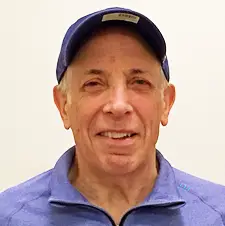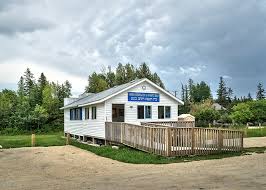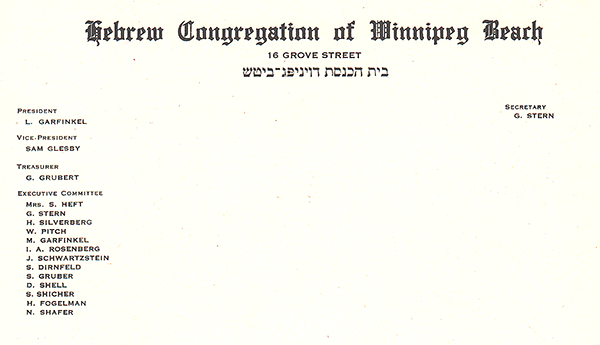Local News
How walking into the wrong synagogue service led to my rekindling memories of the Stall family on McAdam Avenue

By GERRY POSNER I often attend synagogue on Shabbat, though I do miss from time to time. Recently, I was back from a trip and was just not ready to return to my regular synagogue services. I planned to miss it. Then, an email surfaced on the Friday before that particular Shabbat. The sender, who was a good friend of mine, invited me to come to my shul where he was not a member, but there was to be a person speaking that day at the synagogue on a topic dear to him, relating to a tour he had taken not that long ago to Morocco. The speaker was his leader from that tour. So, I changed my mind and, sure enough, there I was at synagogue again – after a three week absence.
The service had two unexpected occurrences, at least for me. First, as I scanned the handout that was given to attendees prior to the service, i realized that nowhere was there any reference to a speaker. When I met my friend he was as perplexed as I was, so we set out into other areas of the Beth Tzedec Synagogue (and there are many there). As it turned out, there was another service going on at the same time upstairs in the gymnasium. Sure enough, there was the man who was going to be speaking.
However, that moment presented a definite dilemma for me. When I was in the chapel at the regular service, there on the handout was a notice that there was to be an “Oifruf “that morning for a Benjamin Stall – to a Rachel Calmas. The Calmas name meant little to me, but I was quite familiar with the Stall name. For anyone who has lived in Winnipeg at any time, the name Stall is almost immediately recognizable. There was once Stall and Son, well known to many in the business world and there members of the Stall family that lived on McAdam Avenue whom I knew from my Winnipeg days as a student about to enter university. Thus, I decided to return to the regular service.
Many readers may recall a tragedy that came upon three Jewish Winnipeg families in June of 1963 when a car accident in Alberta killed Samuel Corman and Morton Stall, also severely injuring Arnold Popeski, as well as ending the lives of three other young men, also from Winnipeg. Many in the Winnipeg Jewish community and indeed beyond were affected. I was for sure. As it turned out, arising from that tragedy was a relationship with the Stall family that had a major impact on my life thereafter.
Of the three boys – Corman, Stall, and Popeski, my most significant connection was with Samuel Corman, as my family and his family were tight and I was a good friend of his. I also was closely connected with Arnold from AZA, where we were both active. I was friendly with Morton, but I knew him the least, as he was in the north end and I was a south ender and, though we crossed paths,I didn’t really know the Stall family, that is – until the summer of 1963.
As it turned out, that summer I had a job as a Fuller Brush salesman. My territory included a good chunk of the north end, particularly in the area where the Stalls lived: 160 McAdam Avenue. Back in those days, women were usually at home during the day and not at work – at least that was my experience then as a door to door salesman. I could work at my own time and pace. Thus, I often had the time and desire to visit the Stalls that summer, even after the shiva. It was at the shiva where I first met a younger brother to Morton, Richard, who was well under ten years of age. I knew his sister Phyllis (hard for a teenage boy not to recognize a girl so pretty) and I knew of an older sister, Shelley (later Shelley Rusen).
But the people I really came to know were Nathan and Gert Stall, the parents of those four Stall children. I would pop into their home unannounced and, if it bothered them, they never mentioned it. I sensed that they welcomed those visits. I often interacted with Phyllis and Richard.
But then, in the fall of 1963, off I was off to the University of Toronto law school. Nate Stall had told me that he had occasion to come to Toronto on business from time to time and he would be happy to take me out for dinner if I wanted.
Well, that meant little to me at first, but as I settled in at my sister’s apartment for my first year away, I was more than happy to take up the offer to go with Mr. Stall for supper. When he called me in October 1963, I was delighted to go out with him. Now, not only did he take me for dinner, he took me to what was then the premier restaurant in the c -ity of Toronto and for years going forward: the Carmen Club. You could smell the steaks and garlic for blocks around. What a joy that was for me to eat so well and with a man whom I had come to know. I suppose, on reflection, I might have served as a kind of relief from the grind of a business trip and perhaps he connected me to Morton.
That dinner was followed by many other Carman Club dinners over the four and a half years I remained in Toronto. I loved our times together and he always gave my parents a first hand report on me. I saw him and indeed his wife Gert later when I returned to live in Winnipeg and we always had a bond. I never saw Richard after 1963, or if I did, it just does not make my memory pool. I did see Phyllis of course, after her marriage to Marvin Shenkarow. Also, from time to time I connected with Shelley and her husband, Aubie Rusen.
So there I was at synagogue and who was sponsoring the kiddush for the Oifruf for his son but Richard Stall and his wife Lisa Berger, another former Winnipege – related to the Berger family of doctors. It was quite the moment for me. I waited until after the service ended before going up to Richard and Lisa. It was hard to focus on the service as all those memories of the Stall family came flooding back to me.
Given that Richard is the last surviving member of the family, it was all the more significant. We had a good chat, including remembering that same day, March 23, was his late sister Phyllis’s birthday some 77 years ago.
I was so immersed in conversation that by the time I made it to the kiddush table, the lunch I had expected would be waiting there for me was gone. There are worse things, I suppose. I also met another son of Richard and Lisa’s, Dr. Nathan (for his grandfather) Morton (for his uncle) Stall. That name, Nathan Stall might well be familiar to readers as he was the go-to guy in the media for expert commentary on the impact of Covid on the elderly. He was on TV frequently. And now, Nathan Stall is already, at a young age, a prominent geriatrician. As well, not that long ago, he was a candidate for the Liberal Party in Ontario in the 2022 election. Although he did not win, he did very well, losing by only 1,000 votes.
As it turned out, the Shabbat that day was Shabbat Zahkor or “remembrance.”
Well, I certainly was into that Shabbat as I did a whole lot of remembering. And yet, the opportunity to remember and indeed engage in the past so meaningfully for me all came about when because I was supposed to go to another event that day – which I missed entirely. Strange how it all played out.
Local News
Thank you to the community from the Chesed Shel Emes

We’re delighted to share a major milestone in our Capital Campaign, “Building on our Tradition.” Launched in November 2018, this campaign aimed to replace our outdated facility with a modern space tailored to our unique needs. Our new building is designed with ritual at its core, featuring ample preparation space, Shomer space, and storage, creating a warm and welcoming environment for our community during times of need.
We’re grateful to the nearly 1,000 generous donors who contributed over $4 million towards our new facility. A $750,000 mortgage will be retired in November 2025, completing this monumental project in just seven years.
We’re also thrilled to announce that our Chesed Shel Emes Endowment Fund has grown tenfold, from $15,000 to $150,000, thanks to you, the Jewish Foundation of Manitoba’s FundMatch program, and Million Dollar Match initiative in 2024. Our fund helps ensure that everyone can have a dignified Jewish funeral regardless of financial need.
As we look to the future, our goal remains to ensure the Chevra Kadisha continues to serve our community for generations to come. Our focus now shifts to replenishing our savings account and growing our JFM Endowment fund.
We’re deeply grateful for your support over the past several years.
It’s our privilege to serve our community with care and compassion.
With sincere appreciation,
Campaign cabinet: Hillel Kravetsky, Gerry Pritchard, Stuart Pudavick,
Jack Solomon, and Rena Boroditsky
Murray S. Greenfield, President
Local News
Winnipeg Beach Synagogue about to celebrate 75th anniversary

By BERNIE BELLAN (July 13) In 1950 a group of cottage owners at Winnipeg Beach took it upon themselves to relocate a one-room schoolhouse that was in the Beausejour area to Winnipeg Beach where it became the beach synagogue at the corner of Hazel and Grove.
There it stayed until 1998 when it was moved to its current location at Camp Massad.
On August 2nd members of the synagogue will be holding a 75th anniversary celebration.

As part of the celebration anyone who is a descendant or relative of any of the original members of the first executive committee (as seen in the photo here) is invited to attend the synagogue that morning.
If you are a relative please contact Abe Borzykowski at wpgbeachshule@shaw.ca or aborzykowski@shaw.ca to let Abe know you might be attending or for more information about the 75th anniversary celebration.
We will soon be publishing a story about the history of the beach synagogue, which is something I’ve been writing about for over 25 years.
Local News
Vickar Family cuts ribbon on new Tova Vickar and Family Childcare Centre

By MYRON LOVE In the words of Larry Vickar, the Shaarey Zedek’s successful Dor V’ Dor Campaign “is not only a renewal of the synagogue but truly a renewal movement of Jewish life in our community.”An integral part of that renewal movement was the creation of a daycare centre within the expanded synagogue. On Monday, June 23, Larry and Tova Vickar cut the ribbon, thereby officially opening the Tova Vickar and Family Childcare Centre in the presence of 100 of their family members, friends and other supporters of the project.
The short program preceding the morning ribbon-cutting began with a continental breakfast followed by a welcome by both Fanny Levy, Shaarey Zedek’s Board President, and Executive Director Dr. Rena Secter Elbaze. In Elbaze’s remarks, she noted that Larry and Tova wanted their family (including son Stephen and family, who flew in from Florida) and friends at the event to celebrate the opening of the Tova Vickar and Family Childcare Centre, “not because of the accolades, but because, as Larry put it, he hopes that their investment in the congregation will inspire others to do the same.”
“When Larry and I spoke about what this gift meant to him and the message he wanted people to take away,” she continued, “I couldn’t help but connect it to the teachings of Reb Zalman Schachter-Shalomi whose book – Age-ing to Sage-ing – changes the whole way we look at the concept of ageing and basing it on our ancestral teachings.”
She explained that his concept of “Sage-ing” is based on three key ideas – Discover your meaning and purpose; accept our mortality and think about the legacy you want to leave.
“Larry spoke about these exact concepts when we met,” she said.
Elbaze also noted the presence of Shaarey Zedek’s newly-arrived senior Rabbi Carnie Rose, former Rabbi Alan Green, and area MLAs Mike Moroz and Carla Compton.
Larry Vickar expressed his great appreciation for all those in attendance. “Tova and I are deeply moved to stand here with you today for this important milestone in our community”, he said. “We are grateful to be surrounded by all of you, the people we care about, our family and friends… you who have touched our lives and played some part in our journey.”
